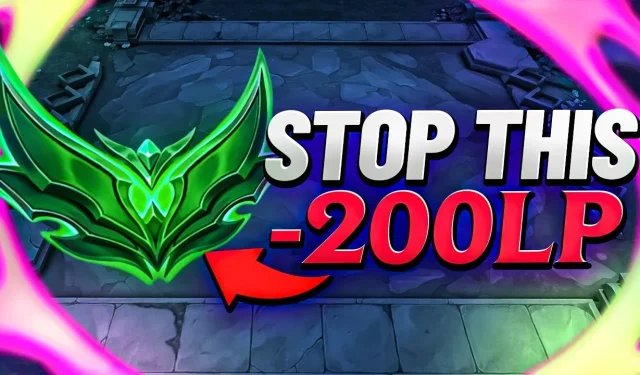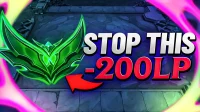The latest video from BunnyMuffins titled “5 Common TFT Mistakes Players Below Diamond Make” delves into the most frequent pitfalls that new and intermediate players encounter in Teamfight Tactics (TFT). By analyzing these common errors, the video provides valuable insights aimed at helping players refine their strategies and improve their gameplay. In this article, we will explore each of the five mistakes highlighted in the video, offering an in-depth look at their implications and how players can avoid them to elevate their performance in this popular auto-battler.
1. Inconsistent Leveling and Economy Management
One of the first mistakes mentioned is the inefficient management of in-game resources, particularly leveling and gold. TFT’s economy system is nuanced, and players below Diamond often struggle with timing their level-ups and understanding the intricate balance between spending and saving. Players must grasp the concept of interest—earning gold from saved resources—to leverage better options in the later stages of the game.
Furthermore, players frequently overlook the timing of their levels; early leveling can yield stronger units, but it can also drain resources quickly if not managed carefully. Improved understanding of when to level up based on current board strength and opponent dynamics can create significant advantages in securing a top position in matches.
2. Overcommitting to a Specific Comp
The second mistake highlighted revolves around the tendency to rigidly stick to a chosen composition regardless of the game’s progression. While having a planned strategy is vital, the dynamic nature of TFT demands flexibility. Players often make the error of overcommitting to specific champions or synergies without considering the cards they’re actually receiving or the strategies their opponents are adopting.
Adapting to the flow of the game and pivoting to alternative compositions can prevent wasted resources and help players maintain competitiveness as the match progresses. Decision-making skills play a crucial role here, and learning to read the game’s state can lead to better outcomes during critical moments.
3. Neglecting Positioning Strategies
Another key area where players falter is in champion positioning. Poor placement can dramatically impact the effectiveness of unit abilities and survivability, often leading to avoidable losses. Many beginners—to the detriment of their performance—place their carries in vulnerable locations where they can be easily targeted by enemy units or assassins.
Understanding the ebb and flow of battles, including recognizing the strengths and weaknesses of opposing compositions, allows players to effectively position their champions. Good positioning can maximize damage output while safeguarding crucial units from threats, ultimately contributing to a more strategic edge in gameplay.
4. Ignoring Synergies and Itemization
The fourth mistake centers on the underutilization of champion synergies and effective itemization. Players often focus on acquiring high-cost champions without properly considering how team synergies might be optimized. This mistake leads to imbalanced team compositions that lack necessary interactions between champions, ultimately detracting from their potential effectiveness on the board.
Moreover, understanding which items best complement their champions and synergies is vital for maximizing performance. Proper itemization bolsters unit combat effectiveness, granting desirable attributes like damage, health, or utility that can change the course of a match. Players need to become adept at crafting synergies while maintaining awareness of how to build items to serve their strategy best.
5. Lack of Adaptation to Opponent Strategies
The final mistake discussed is a general lack of awareness regarding opponents’ strategies. Many players fail to adapt their playstyle based on what other players are doing, leading to predictable board states that can be countered easily. By keeping an eye on trends in opponents’ compositions and strategies, players can make informed decisions to either counter or synergize effectively.
This adaptive gameplay creates an opportunity to anticipate and respond to threats, particularly in the mid-to-late game where other players’ adjustments become vital. Acknowledging the strength of others’ boards and adjusting one’s approach accordingly can be a game-changer, reinforcing the need for vigilance and strategic foresight.
Conclusion
As Teamfight Tactics continues to be a captivating auto-battler, avoiding these five common mistakes can significantly enhance players’ experiences and results. By refining their strategies around economy management, adaptability, positioning, synergies, and opponent awareness, players can climb the ranks more effectively. As the gaming community grows, what further strategies and insights will emerge to help players avoid these pitfalls? Engage with the community, share experiences, and let’s continuously learn together!
https://www.youtube.com/watch?v=laxpichSjv4


